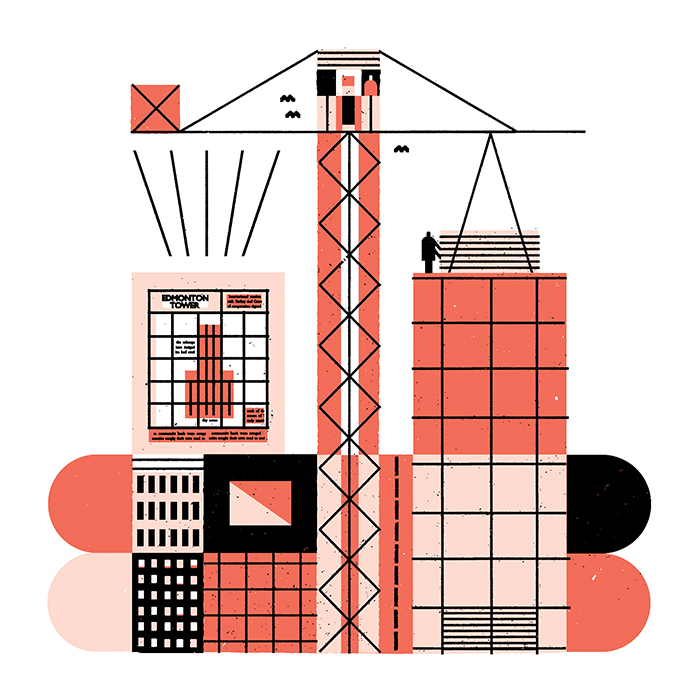In The Edifice Complex, London-based architectural critic Deyan Sudjic writes, “Architecture is about power. The powerful build because that is what the powerful do.” The most impressive structures tell stories about those who built them, or at least about how they viewed themselves, in such a blatant way that seduces and even intimidates those below. The masterminds of Pharaonic Egypt, 1920s New York and modern Shanghai all knew this, but the architects of Edmonton? There’s little one can read from its skyline but modesty, complacency, even inferiority, although much of the opposite is true.
Here we are, the second youngest workforce in Canada, the gateway to the continent’s largest oil reserves, with one of the best economies in North America. We’re the capital city of a province quite literally fuelling one-sixth of the nation’s GDP – and yet vital parts of the city look as though Red Green wrapped duct tape around them and said, “That’ll do.”
“No more crap.” It is impossible to have a critical conversation about Edmonton architecture without these three words uttered by Mayor Stephen Mandel in his now-famous 2005 speech that dared designers to think further than the mere functionality of new buildings. Today, as he prepares to hand over his keys after nine years in office, he denies that his desire for more impressive architecture had anything to do with the renewed political power of Edmonton. “It’s all about image and respect for ourselves. You go to cities around the world and much of the definition of who they are is in their architecture,” he says.
Regardless of his intentions, the speech lit a fire under local planners and developers, says David Holdsworth. The heritage planner recalls a swift cultural change within City Hall. “When your leadership at the top changes to say, ‘We want something better,’ it allows us to ask for more,” says Holdworth, pointing to the evocative design of the Art Gallery of Alberta and the coming new arena as evidence. “The pendulum is swinging now.”
